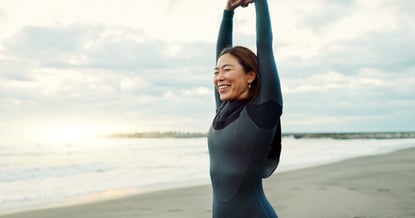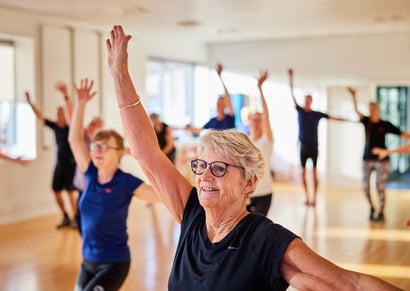 Running can be a great form of exercise; it can also be frustrating if you’ve hit a plateau or feel like you are not very good at it. The key to enjoying running might not be running longer but running smarter. Variable speed and intensity training techniques, such as intervals, tempo runs, and Fartlek workouts, can help build endurance, increase efficiency, and make your runs more dynamic. Whether you’re training for a 5K or a marathon, these methods can take your stamina to the next level.
Running can be a great form of exercise; it can also be frustrating if you’ve hit a plateau or feel like you are not very good at it. The key to enjoying running might not be running longer but running smarter. Variable speed and intensity training techniques, such as intervals, tempo runs, and Fartlek workouts, can help build endurance, increase efficiency, and make your runs more dynamic. Whether you’re training for a 5K or a marathon, these methods can take your stamina to the next level.
Logging miles at the same pace every run might feel comfortable, but it can also hold you back. If your endurance isn’t improving despite consistent effort, it’s time to mix things up. Variable speed and intensity training introduces bursts of speed, recovery jogs, and effort changes that challenge your body to adapt. This approach keeps workouts engaging and helps you improve as a runner wether you are just starting out or training for your next marathon.
Interval Training
Intervals alternate between high-intensity bursts and recovery periods. A simple workout includes running at a challenging pace for 30 seconds, followed by a minute of light jogging, repeated for 20–30 minutes. This method enhances cardiovascular efficiency and conditions your body to sustain faster paces longer.
Fartlek Training
Swedish for “speed play,” Fartlek training adds unstructured bursts of speed to your run. Instead of strict timing, you might sprint to a stop sign, jog to the next tree, then push the pace for a minute. This technique improves endurance while keeping runs fun and unpredictable.
Tempo Runs
Tempo runs are performed at a “comfortably hard” pace—about 80–90% of your max effort. A classic tempo run includes a 10-minute warm-up, 20 minutes at a challenging pace, and a 10-minute cooldown. Training at this intensity helps you sustain faster speeds without fatigue setting in too soon.
Long Runs with Pace Variability
Instead of running at a steady pace, add variations. For example, during a 10-mile run, maintain an easy pace for five miles, pick up speed for two miles, return to an easy pace for two miles, then finish strong. This method improves endurance and race-day readiness.
Building endurance isn’t just about running more—it’s about training smarter. By incorporating variable speed and intensity techniques, you’ll boost stamina, increase efficiency, and break through plateaus. Try adding one of these workouts to your routine and see how your endurance transforms!
Sample Schedule
- Monday: Rest or light recovery jog
- Tuesday: Interval or tempo run
- Wednesday: Easy run or cross-training
- Thursday: Fartlek run
- Friday: Rest or active recovery
- Saturday: Long run with pace variability
- Sunday: Easy run or cross-training
Common Mistakes to Avoid
- Overtraining: Too much intensity leads to burnout or injury. Rest days are crucial.
- Skipping Warm-Ups & Cooldowns: Warming up prevents injury and cooling down aids recovery.
- Neglecting Nutrition & Hydration: Proper fueling sustains energy levels and improves performance.
If you have questions on what will best suit your needs and would like a more individualized training program contact your NIFS fitness center staff!

 Did you know by the time we reach age 30 we have reached what is called our “peak bone mass”? According to the American Academy of Orthopedic Surgeons, most of us will reach this peak between the ages of 25 and 30. As we age, it is imperative we are aware of the signs of Osteoporosis and how we can combat these symptoms and risk factors.
Did you know by the time we reach age 30 we have reached what is called our “peak bone mass”? According to the American Academy of Orthopedic Surgeons, most of us will reach this peak between the ages of 25 and 30. As we age, it is imperative we are aware of the signs of Osteoporosis and how we can combat these symptoms and risk factors. 
 Regular exercise is incredibly beneficial for people with Parkinson’s disease (PD). It helps manage symptoms like stiffness, gait issues, posture, and balance deficiencies. Individual exercises can build into complex movement patterns, eventually evolving into activities such as dancing, yoga, and boxing. Since PD presents itself uniquely in each person, no two exercise programs will look the same. A personalized plan that takes into account both the individual’s daily needs and the activities they enjoy most will have the greatest impact on improving their quality of life.
Regular exercise is incredibly beneficial for people with Parkinson’s disease (PD). It helps manage symptoms like stiffness, gait issues, posture, and balance deficiencies. Individual exercises can build into complex movement patterns, eventually evolving into activities such as dancing, yoga, and boxing. Since PD presents itself uniquely in each person, no two exercise programs will look the same. A personalized plan that takes into account both the individual’s daily needs and the activities they enjoy most will have the greatest impact on improving their quality of life.
 At NIFS, we believe in the power of movement. That’s why our partnership with
At NIFS, we believe in the power of movement. That’s why our partnership with 
 Aging gracefully starts with the right nutrients! Good health doesn’t happen by chance—it requires proactive choices. Nutrition is important for every generation, but it becomes even more critical as we age. As we grow older, our nutritional needs change, and understanding what’s essential can make all the difference in staying active, healthy, and full of energy. In this blog, we will discuss why your nutritional needs change with age, key nutrients to focus on, and easy ways to incorporate them into your life.
Aging gracefully starts with the right nutrients! Good health doesn’t happen by chance—it requires proactive choices. Nutrition is important for every generation, but it becomes even more critical as we age. As we grow older, our nutritional needs change, and understanding what’s essential can make all the difference in staying active, healthy, and full of energy. In this blog, we will discuss why your nutritional needs change with age, key nutrients to focus on, and easy ways to incorporate them into your life.
 The heart is the engine of the human body, powering countless interactions every single day that enable us to live, thrive, and become the best versions of ourselves. While maintaining heart health might seem like a complex goal, small changes in our daily routines can make a big difference. Let’s explore three actionable tips that can help improve your heart health in safe and manageable ways!
The heart is the engine of the human body, powering countless interactions every single day that enable us to live, thrive, and become the best versions of ourselves. While maintaining heart health might seem like a complex goal, small changes in our daily routines can make a big difference. Let’s explore three actionable tips that can help improve your heart health in safe and manageable ways!
 In today’s fast-paced, screen-driven world, we often lose sight of the simple, powerful connection between our minds and bodies. We get caught up in endless to-do lists, meetings, and notifications, leaving little time to pause and just be. But what if you could take small, intentional steps to bring balance back into your life? This article explores simple, effective ways to nurture that connection and create space for mindfulness, movement, and renewal.
In today’s fast-paced, screen-driven world, we often lose sight of the simple, powerful connection between our minds and bodies. We get caught up in endless to-do lists, meetings, and notifications, leaving little time to pause and just be. But what if you could take small, intentional steps to bring balance back into your life? This article explores simple, effective ways to nurture that connection and create space for mindfulness, movement, and renewal. You are scrolling through social media for entertainment and inspiration, and you see the person you want to be like. They are fit, energetic, happy, and have been consistent with their workouts for years now. Maybe you’ve been exercising on and off for a while but can’t find the routine that you can stick to. Well, it’s a new year, so… “New year, new plan!”
You are scrolling through social media for entertainment and inspiration, and you see the person you want to be like. They are fit, energetic, happy, and have been consistent with their workouts for years now. Maybe you’ve been exercising on and off for a while but can’t find the routine that you can stick to. Well, it’s a new year, so… “New year, new plan!”
 Popularized by James Clear in Atomic Habits, habit stacking involves pairing a desired action with something you already do daily. Examples of routine actions include waking up, brushing your teeth, or putting on your shoes. By adding a desirable action directly before or after these existing habits, it becomes easier to incorporate into your life.
Popularized by James Clear in Atomic Habits, habit stacking involves pairing a desired action with something you already do daily. Examples of routine actions include waking up, brushing your teeth, or putting on your shoes. By adding a desirable action directly before or after these existing habits, it becomes easier to incorporate into your life. The quick answer, we became experts because we have been specializing in this population for over 20 years in our work in senior living communities. It takes time and dedication to develop a niche as strong as what NIFS has within an industry. We have been part of the wellness evolution as fitness centers were included in renovations and master plans and communities looked to staffing and programming models to help their residents use these amenities safely. We’ve further witnessed consumer options evolve in the senior living landscape with more choices than ever before on where older adults choose to live including 55+ neighborhoods, IL communities, to lifeplan communities. Each environment has its own priorities and challenges in supporting the health and fitness needs of the residents who live there but all understand the necessity of providing vibrant lifestyles. The industry is expected to
The quick answer, we became experts because we have been specializing in this population for over 20 years in our work in senior living communities. It takes time and dedication to develop a niche as strong as what NIFS has within an industry. We have been part of the wellness evolution as fitness centers were included in renovations and master plans and communities looked to staffing and programming models to help their residents use these amenities safely. We’ve further witnessed consumer options evolve in the senior living landscape with more choices than ever before on where older adults choose to live including 55+ neighborhoods, IL communities, to lifeplan communities. Each environment has its own priorities and challenges in supporting the health and fitness needs of the residents who live there but all understand the necessity of providing vibrant lifestyles. The industry is expected to 